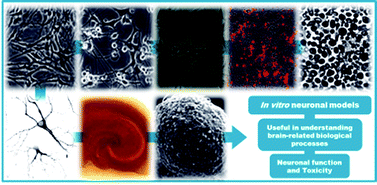In vitro models for neurotoxicology research
Abstract
The nervous system has a highly complex organization, including many cell types with multiple functions, with an intricate anatomy and unique structural and functional characteristics. The study of its (dys)functionality following exposure to xenobiotics, neurotoxicology, constitutes an important issue in neurosciences. Despite the extensive use of in vivo models to reveal the neurotoxicological phenomena, the existence of difficulties related to the increasing cost and time required for neurotoxicity studies with experimental animals, as well as the animal ethical concerns, have limited their use. Consequently, in vitro alternatives, providing an understanding of the mechanistic basis, at the molecular and cellular level, have earned a notable consideration in the field of neurotoxicological research. In this field, the selection of the most appropriate in vitro neuronal system relies on specific endpoints that are of particular relevance for the neurotoxicological phenomena that will be studied. Furthermore, application of specific endpoints to various neuronal cellular models should be done in a careful way to build reliable and feasible testing strategies. This review addresses the use of in vitro models for neurotoxicity research, aiming to contribute to a better understanding and guidance of in vitro neurotoxicological studies. As such, subcellular systems, namely isolated mitochondria and synaptosomes, and cellular models, including immortalized cell lines, primary cultures, co-cultures, organotypic cultures, neural stem cells and blood–brain barrier models, as well as their inherent advantages and limitations, are discussed.



 Please wait while we load your content...
Please wait while we load your content...